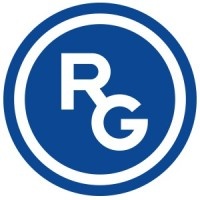Gedeon Richter was founded in Budapest, Hungary in 1901. Over a century later, it’s the largest pharmaceutical company in Central and Eastern Europe. It has a global presence across 5 continents, 12,000 employees on the roster and €2 billion in annual revenue.
Much has changed since the company’s humble beginnings.
Most recently, from 2008 to 2017, the company underwent a major strategic shift away from generic offerings. It now creates more specialty products, such as original medicines and biotechnology drugs.
This was great news for doctors and patients across the globe. But, the research and development involved placed immense pressure on the project management office (PMO).
This pressure was a catalyst for change. One that would lead the pharmaceutical company to Planisware.
The Challenge: Manual Processes and Unwieldy Spreadsheets
Previously, Gedeon Richter’s project management processes were manual. That is, employees conducted strategic planning via Excel spreadsheets. This meant much of their R&D time was spent validating data, doing manual calculations and creating custom reports. The annual milestone progress report took over 20 hours to compile each January.
Plus, siloed and inaccessible data led to poor transparency across the project portfolio. This resulted in issues with:
- Prioritizing R&D projects.
- Scheduling resources and capacity planning.
- Conducting data analyses.
- Maintaining checks and balances.
- Coordinating shared processes.
As a result, the team suffered from unacceptable project delays and missed targets. One such data transparency failure led to two years lost revenue from a target geography.
This scenario didn’t bear repeating. The PMO started centralizing the organization and oversight of R&D projects. And, they decided to bring in Planisware to help them implement a better solution.
The Solution: A Feature-Rich PPM Tool
Gedeon Richter’s partnership with Planisware began in 2019. The change project was coined “Catalyst”. Together with the client, Planisware aimed to make project strategy, resource allocation, and activity management processes more transparent. And, the team wanted to evolve those activities, making the PPM a more mature, data-driven undertaking.
A new, integrated PPM tool was at the heart of this internal transformation. In particular, the project management team needed advanced resource, cost-planning, and reporting functions. And, in the words of Kristof Bagdi, R&D Program Manager at Gedeon Richter:
“Planisware made sense. It has many versatile out-of-the-box solutions and endless customization opportunities. The other options didn’t have the same level of maturity.”
The Implementation Journey
As the saying goes, “Good things come to those who wait.” The implementation of Planisware Enterprise took more than 2 years. It was broken up over 12 Agile sprints through Kromit Consulting, based in Austria.
In this time, Planisware helped Gedeon Richter to:
- Redesign its PPM structure, including project and program naming structures.
- Plan a step-by-step release, starting with basic project management tools (like timelines).
- Gradually increase releases of more complex features (such as cost planning).
- Migrate all programs and existing project data into the tool after the first go-live.
- Onboard stakeholders and facilitate customized training programs for each user group.
Learning Along the Way
They also say “Hindsight is 20/20”. With this longer implementation cycle, Planisware uncovered some challenges. For example, functionality constraints as processes and data were being gradually switched over to the new platform.
On the other hand, users were able to really get to know the systems and provide live data to influence the configuration. This brought a lot of learnings to the surface. For example, a need for more flexibility across a number of functions. Ultimately, Planisware and Gedeon Richter used this feedback to make the whole system more tailored to the end users. This boosted engagement and buy-in.
Finding the Right Configuration
In the end, Planisware organized Gedeon Richter’s R&D activities into 3 levels. These were based on the Planisware project hierarchy. Every project manager now uses the same work breakdown structure. KPIs are set up as a universal system of milestones and global decision points. This ensures a unified way to set the development project strategy.
Today, nearly 300 people are using Planisware Enterprise. They manage over 280 R&D projects in 150 programs.
The Results: A Single Source of Truth
Since adopting Planisware Enterprise, Gedeon Richter has transformed its project management processes.
Today, it benefits from:
- A single source of truth. All the data is in one place. So, Gedeon Richter has a much-improved ability to oversee and manage projects.
- Accurate capacity data. The PMO can now compare timelines, reports, and resources. They can keep tabs on who is over or under-committed.
- Better cost-planning. Project teams can continuously monitor project financials. This helps to ensure projects are cost-effective.
- Easy reporting. With a wealth of data to hand, Gedeon Richter can quickly generate reports and export them into Excel or PowerPoint. This saves a significant amount of time.
- More frequent insights. Now that a report is available within minutes at the click of a button, the team produce quarterly analyses. As compared to annual reporting, it makes it far easier to spot trends.
For the PMO, the move to Planisware Enterprise has meant time savings, increased efficiency and less stress. For the company as a whole:
“It would be impossible to manage the complexity of geographical locations, global presence, alliance management, and the wide variety of products we develop without the help of the re-shaped program management methodology and Planisware Enterprise. We’re doing things that would have been impossible before.” — Kristof Bagdi
The Future: Closed-Loop Planning
Gedeon Richter’s next milestone is to implement closed-loop planning. Meaning, learning from the past and implementing that data in future planning. Doing this requires 3-5 years to generate enough data to show trends and reach meaningful conclusions.
Planisware continues to support the business as it heads into an exciting new chapter.
Eager to see how Planisware could reinvent your project management processes for the better? Get in touch with our team.
